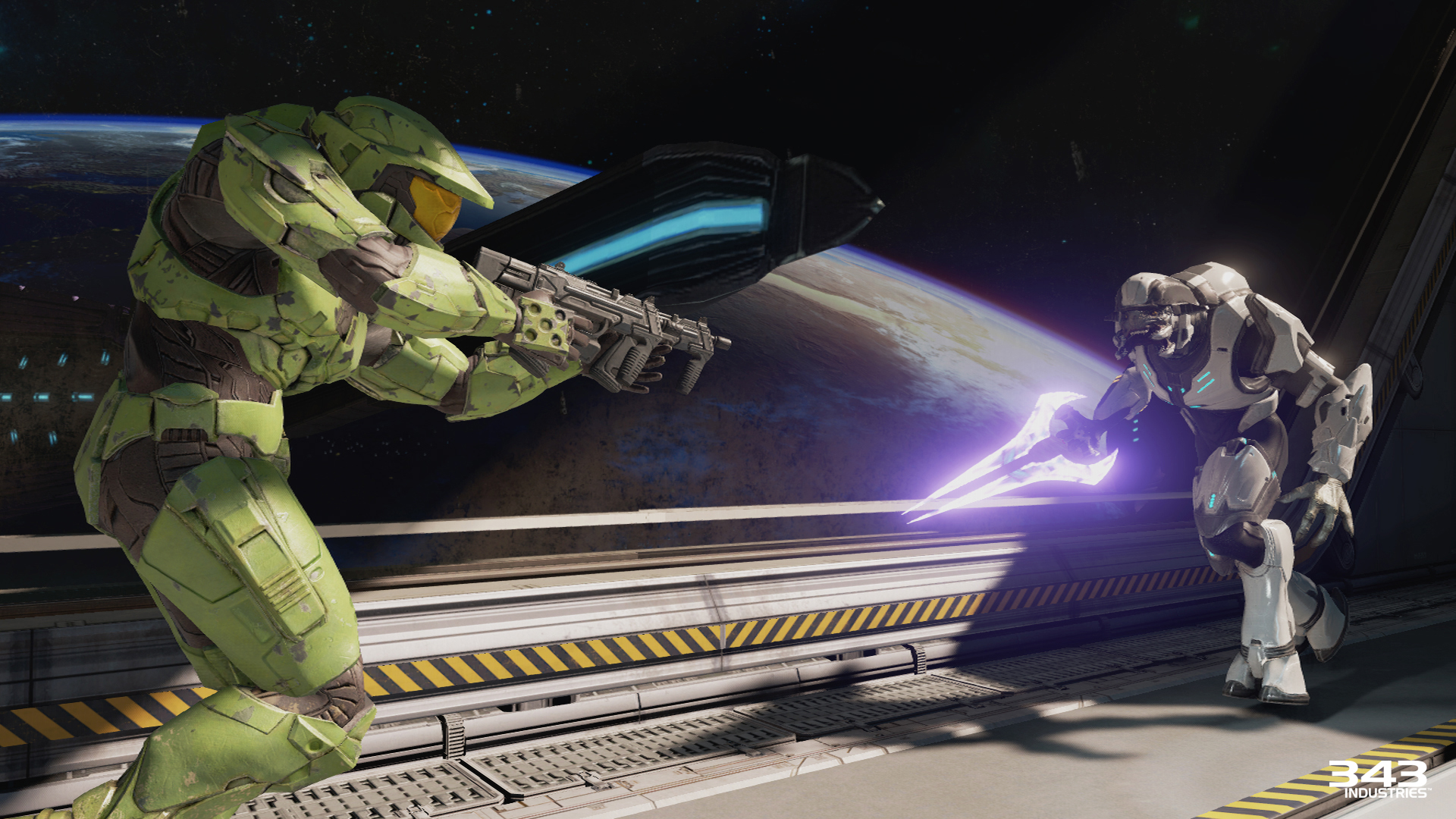
An Interview with Halo Overlord Frank O’Connor
Frank O’Connor is a name familiar to those who have followed the Halo series over the years. Also known as Frankie, he’s the Franchise Development Director for Halo at 343 Industries, overseeing pretty much anything and everything Halo. He goes way back with the series, previously working as the content manager for Bungie – and he knows the franchise better than almost anyone. We caught up with him at this week’s HaloFest 2014 in Los Angeles, California to get his thoughts on the Halo franchise’s various big new developments, from Halo: The Master Chief Collection to the Halo 5: Guardians Multiplayer Beta.
Xbox Wire: What are your thoughts on HaloFest, and all the big Halo stuff you’re working on?
Frank O’Connor: It’s a celebration. We’ve got have celebrities and VIPs and whatnot, but there’s a lot of community guys here as well – people who have stuck with this franchise for 13 years, and we brought them here to play Halo: The Master Chief Collection and the Halo 5: Guardians Multiplayer Beta. We made some changes; some will be boring and some will be controversial, but they’re all changes we intend to make for the better.
And I think we’re gonna get the biggest bang for the buck when the beta goes live, and players are can start feeding [data] to us, and also their opinions and their feelings – they’re harder to gauge and harder to objectify, but we’re gonna do our best, and we’re definitely listening.
Xbox Wire: How did Halo: The Master Chief Collection get off the ground?
Frank O’Connor: Halo: The Master Chief Collection, way back when we started, was just a conversation about Halo 2: Anniversary. The tenth anniversary was coming up, and we had this conversation about what would make it more meaningful. We [realized] that Master Chief’s story is split up by this completely arbitrary thing, which is technology and generations of consoles. You don’t have that with movies, you don’t have that with books; there’s no technological barrier to the continuation of a story. And so we said, “What if we put all the games on one console, finally… and we can just move forward from there?”
Xbox Wire: What was the toughest obstacle for you guys?
Frank O’Connor: The biggest challenge, I think, was the scale. It’s a massive undertaking of four full games. It’s a lot of technology – 60 frames per second, 1080p, all that. There’s a Halo 2: Anniversary multiplayer component, which is really its own game. But I think the biggest challenge was philosophically connecting all these pieces with a unified user interface.
That wasn’t the hardest technological challenge, but it was one of the hardest design challenges, because you had to make Halo: Combat Evolved Anniversary connect with Halo 4 through a user interface that was also easy to navigate. I think if you’re a consumer, you think, “Well, the UI is just some buttons and selections that you press,” but I think game designers and people who work on UI systems for games are gonna look at that and say, “Yeah, I understand why that was a bear.”
Xbox Wire: How did you go about further weaving the games’ respective stories together?
Frank O’Connor: The game stories themselves tie together fairly well; they’re sequels, obviously, and there’s natural cohesion between the stories. But we had this opportunity to really enhance the fidelity. And the one that needed it the most was Halo 2, because it’s this great story but it’s really complicated, and it ends on a cliffhanger. So we worked with Blur and redid all the cinematics, and not just the fidelity – we also did stuff with camera angles to tell the story better, for instance.
We didn’t change the script; the timing is identical, and you can actually switch between the old and new cinematics. But it’s the same story, just told at a higher fidelity… and that really impacts the quality of the story. I showed it to Joe Staten, who wrote the story and worked on the cinematics, and I think he’s happy. I think it’s the story he wanted to tell, and did tell – we just polished it a bit.
Xbox Wire: How was it working with the team at Blur Studio, given their impressive legacy?
Frank O’Connor: The techniques and cinematography that Blur brought to it are huge – an immeasurable benefit to us. Their technology is amazing. Their facial capture, their motion capture… but I think that they added a lot of art to it. [It] was in there, but someone really needed to excavate it and make it sing, and I think they did an amazing job.
